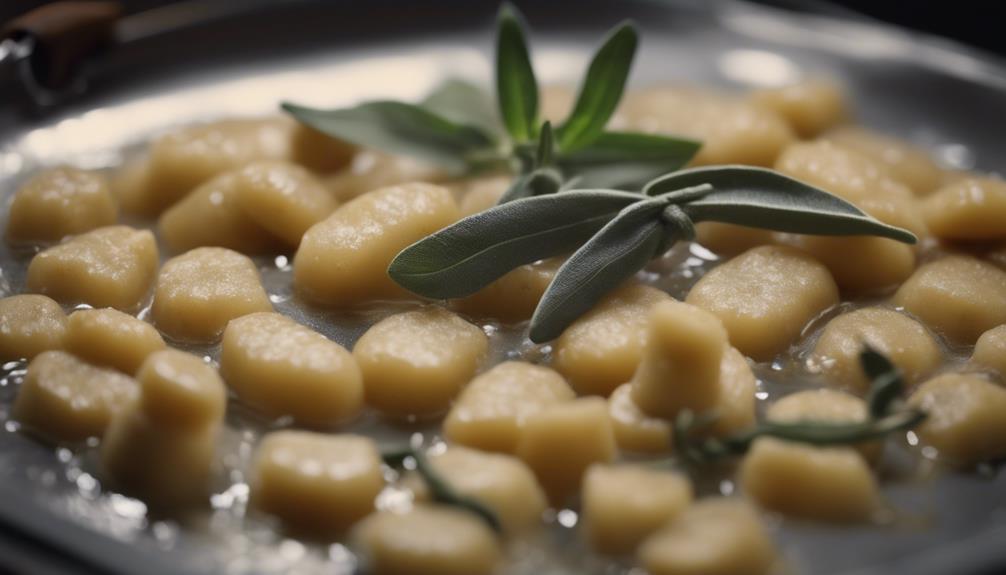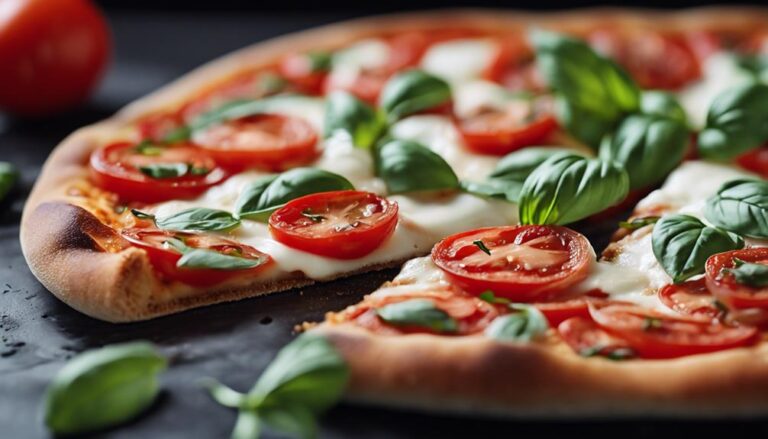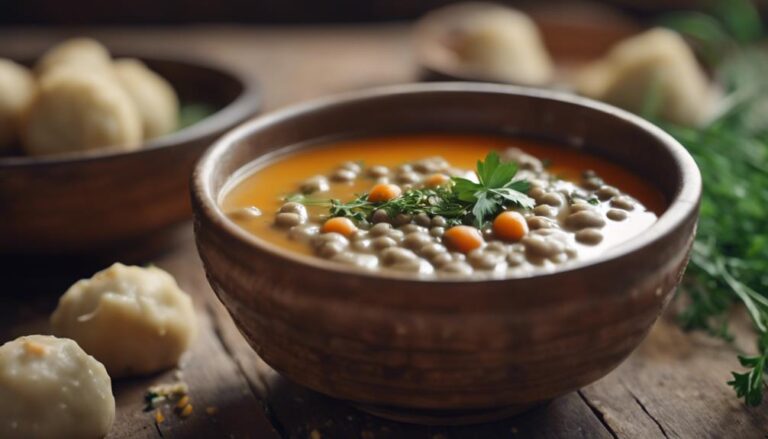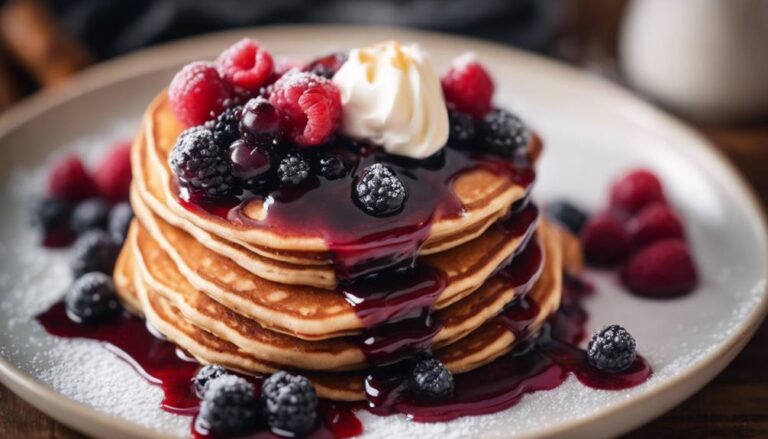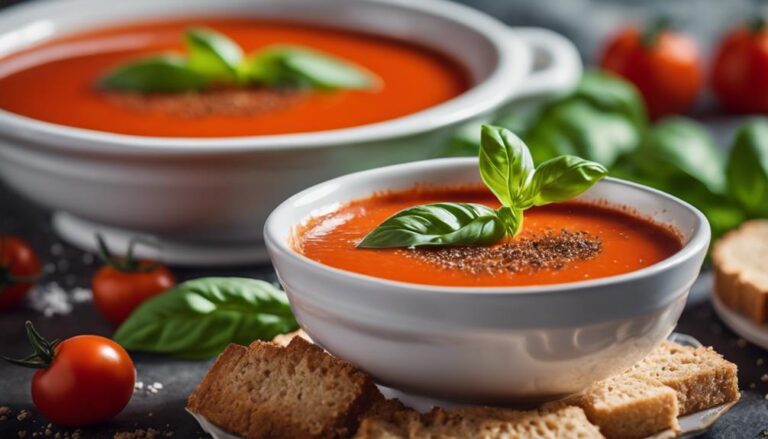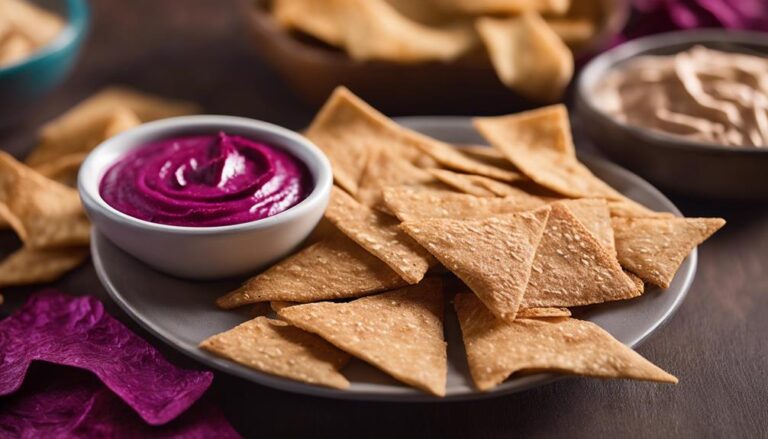Sous Vide Whole Wheat Gnocchi With Sage Butter
Indulge in the divine combination of nutty whole wheat gnocchi and earthy sage-infused butter, elevated to perfection through precise sous vide cooking. Experience a culinary symphony on your taste buds as these flavors harmonize in each savory bite, creating a truly exquisite dining experience. The tender gnocchi, rich with whole wheat goodness, perfectly complements the aromatic sage butter, promising a delightful sensation that will leave you craving more. Embrace this unique twist on a classic dish, where every element is carefully crafted to deliver a memorable feast for your senses.
What You Will Learn Here
- Whole wheat gnocchi offers nutty flavor and nutritional benefits.
- Sage-infused butter adds earthy notes to the dish.
- Sous vide method ensures precise cooking for perfect texture.
- Harmonious blend of flavors and textures in the dish.
- Ideal for cozy dinners or gatherings, providing a memorable dining experience.
Gnocchi's Italian Origins
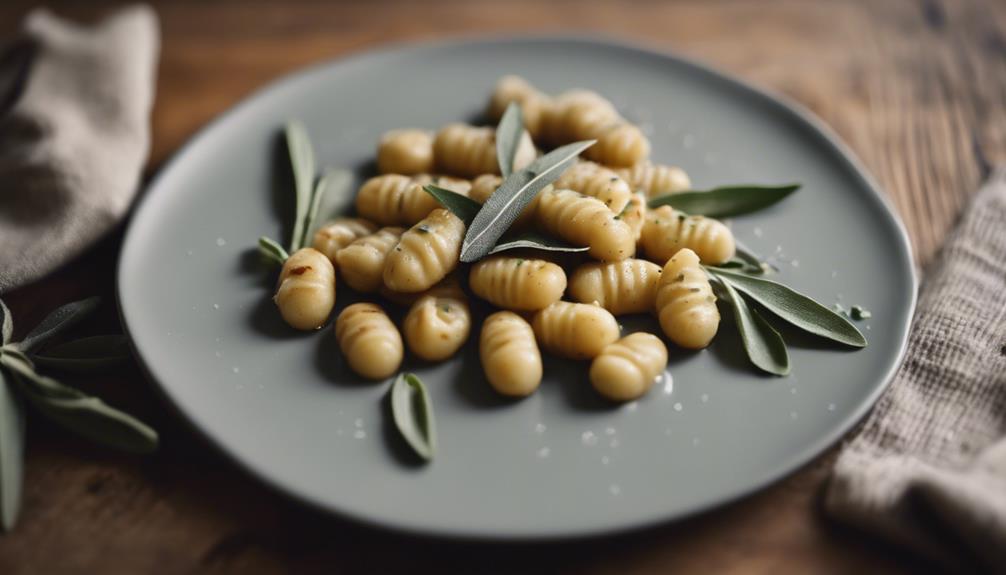
Imagine strolling through the cobblestone streets of Italy, where the origins of gnocchi whisper tales of tradition and culinary artistry.
The delicate balance of potatoes, flour, and eggs in traditional gnocchi recipes dances on the palate, a tribute to generations of Italian craftsmanship.
Witness the evolution of gnocchi, from humble beginnings to a versatile staple in Italian cuisine, each bite a celebration of history and innovation.
Gnocchi's Italian History
Have you ever wondered where the delectable dish of gnocchi originated in Italy? Gnocchi holds a special place in Italian cuisine and pasta history.
Originating in Northern Italy, this beloved dish has been enjoyed for centuries. Gnocchi's Italian history is rich with tradition and culinary significance.
The word 'gnocchi' is believed to have come from the Italian word 'nocchio,' meaning a knot in wood, which describes the small, dumpling-like shape of these pasta pieces. It's said that gnocchi was introduced to Italy in the 16th century and has since become a staple in Italian cooking.
The delicate balance of flavors and textures in gnocchi showcases the artistry and passion embedded in Italian culinary traditions.
Traditional Gnocchi Ingredients
Traditional Gnocchi Ingredients, rooted in Italy's culinary heritage, embody a harmonious blend of simple yet essential components that form the foundation of this beloved dish. When creating traditional gnocchi, ingredient selection is important. The perfect balance of potatoes, flour, eggs, and salt is key to achieving the ideal texture and flavor profiles. Each ingredient plays an important role in the gnocchi-making process, ensuring a delicate balance and harmony in every bite. These ingredients, influenced by centuries-old Italian traditions, are the essence of this classic dish.
| Ingredients | Description | Role | Origin |
|---|---|---|---|
| Potatoes | Starchy potatoes like russets or Yukon Gold are commonly used | Provide a fluffy texture | Italy |
| Flour | All-purpose flour or semolina are typically chosen | Adds structure and binds the ingredients | Italy |
| Eggs | Fresh, high-quality eggs are essential | Helps bind the dough together | Italy |
| Salt | A pinch of salt enhances the flavor | Balances the sweetness of the potatoes | Italy |
Evolution of Gnocchi
The evolution of gnocchi traces back to its Italian origins, showcasing a culinary journey that intertwines tradition with innovation. Gnocchi, a beloved Italian staple, has evolved over centuries, adapting to modern techniques while maintaining its essence.
Originally made with potatoes, flour, and eggs, gnocchi has seen variations incorporating ingredients like ricotta, spinach, or even pumpkin, demonstrating the versatility of this dish. Traditional flavor pairings such as sage butter, tomato sauce, or gorgonzola cream have stood the test of time, while contemporary twists introduce new combinations like truffle oil or pesto aioli.
The evolution of gnocchi continues to inspire chefs to push boundaries, creating dishes that honor tradition while embracing the creativity of modern culinary practices.
Whole Wheat Flour for Gnocchi
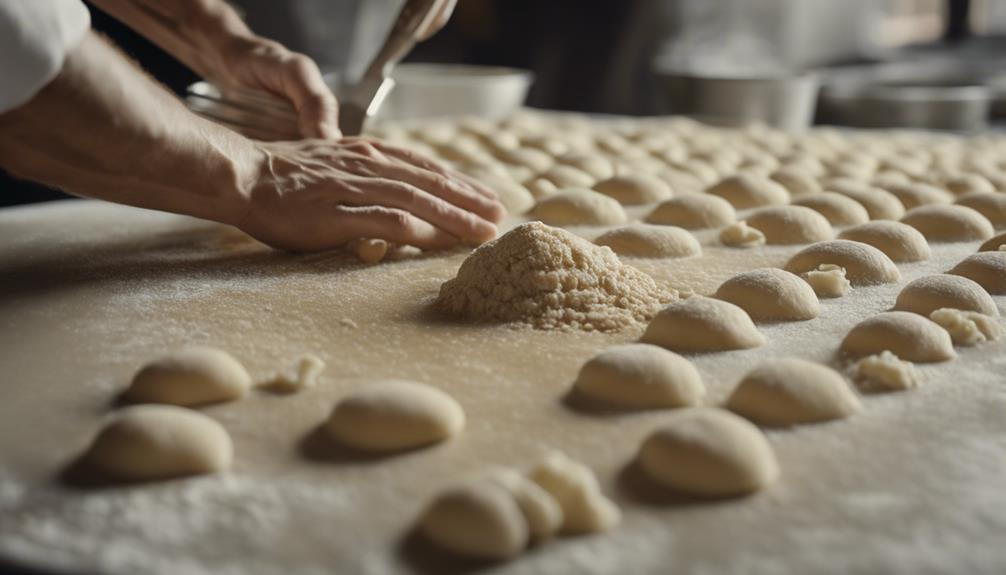
How can whole wheat flour enhance the nutty flavor in your homemade gnocchi?
Whole wheat flour brings a wholesome richness to your gnocchi, elevating its taste while providing nutritional benefits. Here's how it can inspire your culinary journey:
- Nutritional benefits: Whole wheat flour contains more fiber, vitamins, and minerals than refined white flour, adding a nutritious element to your gnocchi.
- Flavor variations: Whole wheat flour introduces a subtle nuttiness that complements the earthy flavors of sage and butter in your dish, creating a harmonious blend of tastes.
- Gluten-free options: For those with gluten sensitivities, whole wheat flour can be a suitable alternative, offering a healthier choice without compromising on flavor.
- Cooking techniques: When working with whole wheat flour, make sure to handle the dough gently to maintain its delicate texture, resulting in pillowy gnocchi that melt in your mouth.
Embrace the nutty essence of whole wheat flour in your gnocchi, crafting a dish that not only delights the palate but also nourishes the body.
Savory Gnocchi Variations
Explore the vibrant flavors waiting to grace your plate with Sage-infused Whole Wheat Gnocchi, a delightful twist on a classic.
Delight your taste buds with the herbaceous freshness of Basil Pesto Gnocchi, a fragrant and satisfying alternative.
Indulge in the creamy richness of Spinach and Ricotta Gnocchi, a comforting and wholesome dish that promises a burst of flavors in every bite.
Sage-infused Whole Wheat Gnocchi
For a flavorful twist on traditional gnocchi, consider infusing whole wheat dough with aromatic sage before shaping the dumplings. The sage imparts a delicate herbal essence, elevating the gnocchi's taste profile. When you serve sage-infused whole wheat gnocchi, your guests will be delighted by the unique combination of earthy flavors. Here are some reasons why this variation will impress your diners:
- Sage adds a fragrant complexity to the gnocchi, enhancing each bite.
- Whole wheat flour brings a nutty undertone that complements the sage butter beautifully.
- The rustic charm of sage-infused gnocchi will evoke warmth and comfort at the table.
- Infusing the dough with sage showcases your attention to detail and culinary creativity.
Basil Pesto Gnocchi Recipe
Enhancing your gnocchi experience with the vibrant flavors of basil pesto opens a world of savory possibilities.
- Pesto Alternatives: Try experimenting with different pesto variations like sun-dried tomato pesto or arugula pesto to add unique twists to your gnocchi.
- Gnocchi Shapes: Explore various shapes for your gnocchi such as traditional pillow-shaped dumplings, ridged cavatelli, or even miniature ball-shaped gnocchetti.
- Flavorful Combinations: Pair your basil pesto gnocchi with roasted cherry tomatoes and fresh mozzarella for a burst of Mediterranean flavors.
- Herbaceous Garnishes: Finish off your dish with a sprinkle of freshly chopped basil or a drizzle of high-quality olive oil to elevate the overall taste experience.
These variations won't only tantalize your taste buds but also showcase your culinary creativity.
Spinach and Ricotta Gnocchi Recipe
Indulge in the delicate blend of spinach and ricotta with this exquisite gnocchi recipe, elevating your culinary repertoire with each savory bite. Crafted with care, these pillows of homemade pasta encase a flavorful filling that delights the senses.
Here's why this spinach and ricotta gnocchi recipe will have you longing for more:
- Mouthwatering Combination: The harmonious marriage of fresh spinach and creamy ricotta creates a burst of flavor in every mouthful.
- Texture Perfection: The lightness of the ricotta and the earthiness of spinach meld seamlessly within the tender gnocchi.
- Satisfying Comfort: Each bite offers a comforting hug of flavors, perfect for a cozy evening in.
- Artisanal Charm: The process of crafting these gnocchi from scratch brings a sense of pride and satisfaction to your table.
Gnocchi Texture Enhancement
When perfecting your gnocchi texture, consider the balance between chewiness and tenderness.
The time you cook your gnocchi can greatly affect its final texture.
Additionally, the ratios of ingredients used play an important role in achieving the desired consistency.
Chewy Vs. Tender
Achieve the perfect balance between chewiness and tenderness in your gnocchi by adjusting the cooking time and temperature precisely.
When considering cooking methods for gnocchi, remember that different methods can yield varying results. The choice between chewy or tender gnocchi depends on your consistency preferences. Some cultural influences lean towards softer textures, while others prefer a firmer bite.
Consider the flavor profiles you aim to highlight; a chewier gnocchi might hold up better with robust sauces, while a tender one can melt in your mouth with delicate flavors.
Experiment with small adjustments in cooking time and temperature to find the ideal texture that will elevate your dish and delight those you serve.
Cooking Time Impact
To enhance the texture of your gnocchi, consider adjusting the cooking time to achieve the desired level of chewiness or tenderness. Cooking techniques play an important role in influencing the final texture of your gnocchi. Longer cooking times will result in a softer, more tender gnocchi, while shorter times will yield a chewier consistency. Experimenting with different cooking times can help you find the perfect balance that suits your preferences. Additionally, varying the cooking time impacts the overall flavor profiles of your dish. For instance, a longer cooking time can intensify the flavors of the ingredients used. When considering ingredient substitutions, be mindful of how they interact with cooking times to maintain the desired texture and taste.
| Cooking Time | Texture Impact | Flavor Profiles | Ingredient Substitutions |
|---|---|---|---|
| Shorter | Chewier | Brighter | Potato Flour |
| Moderate | Balanced | Richer | Semolina Flour |
| Longer | Softer | Intensified | Whole Wheat Flour |
Ingredient Ratios Importance
Enhancing the texture of your gnocchi relies heavily on the precise ratios of ingredients used in the dough. Cooking techniques play an important role in achieving the desired consistency. When aiming for a light and pillowy texture, the right balance of whole wheat flour, potatoes, and eggs is essential.
Flavor profiles can be enhanced by incorporating ingredients like nutmeg or Parmesan. Texture preferences vary, but a well-executed gnocchi should be tender yet firm, with a slight chewiness. Ingredient substitutions can affect the outcome, so it's important to maintain the correct proportions.
Experimenting with different ratios can lead to unique variations in texture, allowing you to tailor your gnocchi to suit your personal taste preferences.
Final Thoughts
As you reflect on the culinary journey of preparing Sous Vide Whole Wheat Gnocchi With Sage Butter, consider the harmonious blend of flavors and textures that make this dish a truly delightful experience. The nutty whole wheat gnocchi, cooked to perfection using the sous vide technique, offers a tender yet satisfying bite that pairs exquisitely with the earthy notes of sage-infused butter. The marriage of these elements creates a dish that is both comforting and sophisticated, perfect for a cozy dinner at home or a gathering with loved ones.
Below is a table that captures the essence of this dish, highlighting its key components and suggestions for a memorable dining experience:
| Component | Description | Suggestion |
|---|---|---|
| Whole Wheat Gnocchi | Nutty and tender | Serve with a sprinkle of parmesan cheese |
| Sage Butter | Earthy and aromatic | Drizzle over gnocchi just before serving |
| Wine Pairing | Light red or white | Pair with a Pinot Noir or Chardonnay |
| Serving Tip | Garnish with fresh sage leaves | Adds a pop of color and flavor |
Embrace the joy of serving others with this delightful Sous Vide Whole Wheat Gnocchi With Sage Butter, a dish that embodies warmth and elegance in every bite.
Frequently Asked Questions
Can I Use All-Purpose Flour Instead of Whole Wheat Flour for Gnocchi?
You can use all-purpose flour for gnocchi instead of whole wheat. It alters texture slightly, providing a lighter, softer bite. Experiment with flavor variations like herbs or cheeses. Enjoy trying different options and cooking methods for delicious results.
Can I Freeze the Gnocchi Before Cooking Them Sous Vide?
To freeze gnocchi before sous vide cooking, seal them in airtight bags. Freezing preserves freshness. After cooking, gnocchi texture may soften slightly but flavor remains. Enjoy the convenience of preparing ahead without compromising on taste.
How Long Can I Store Cooked Gnocchi in the Refrigerator?
After cooking, store your gnocchi in an airtight container in the refrigerator for up to three days. Enhance flavors by experimenting with different sauces or toppings. Enjoy the versatility and convenience of this delicious dish.
Can I Substitute the Sage Butter With a Different Sauce for Gnocchi?
When making gnocchi, feel free to experiment with different sauces to enhance flavors. Gnocchi variations can be paired with diverse sauces like tomato basil, creamy Alfredo, or pesto for a delightful culinary experience.
Is It Possible to Make Gluten-Free Gnocchi Using Alternative Flours?
Yes, you can create gluten-free gnocchi using alternative flours like potato, rice, or almond flour. These options provide a delicious twist while accommodating dietary needs. Experiment with different flours to discover unique flavors and textures.
Conclusion
Indulge in the delicate embrace of sous vide whole wheat gnocchi with sage butter. The earthy whole wheat flour adds depth to this classic Italian dish, creating a hearty and satisfying meal.
Experiment with savory variations to elevate your gnocchi experience, and fine-tune the texture to your liking. Let the flavors dance on your palate, leaving a lasting impression of comfort and culinary artistry.
Enjoy the simple elegance of this dish, and savor each delicious bite.
